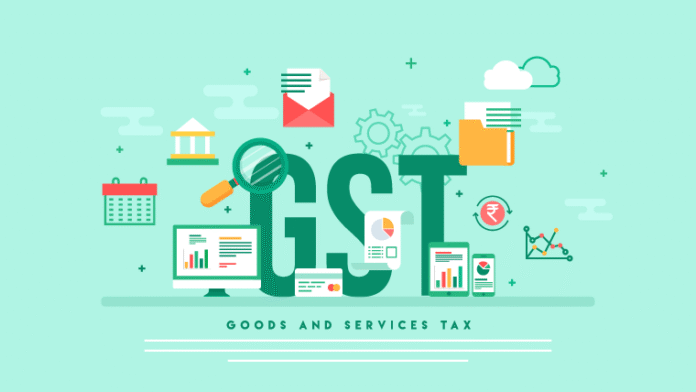By Subhash Chandra Agrawal
The recently announced large-scale reduction and abolition in GST rates on certain commodities is expected to result in revenue decrease through GST. However, this shortfall can be more than compensated by plugging loopholes in the Input-Tax-Credit (ITC) mechanism.
Input-Tax-Credit: A Core Concern
The ITC system in the manufacturing sector remains one of the biggest sources of tax evasion. Unscrupulous practices—where unused GST invoices from consumers are sold by traders to manufacturers for false ITC claims—are rampant. Traders return cash to manufacturers, fueling parallel circulation of currency. This malpractice was a key reason behind the failure of demonetisation (08.11.2016), as cash in circulation rose instead of falling.
A rational study must now assess whether ITC can be altogether abolished in the manufacturing and producing sectors, retaining it only for tradable commodities. Likewise, ITC claims on expense-items (already written off in profit-loss accounts) and on depreciated assets should be disallowed. Such reforms would not affect normal consumers but significantly boost GST revenues.
Irrational Slab Classifications
India’s GST regime is plagued by irrational item classifications. Earlier, clutch-plates and clutch-bearings were taxed under different slabs of 18% and 28%. Similarly, confectionery items—sweets at 5% and namkins at 12%—confused consumers and distorted markets. The Press Information Bureau (PIB) notification of 03.09.2025 listed over 9,000 commodities under revised GST rates effective 22.09.2025. Yet, questions remain whether such irrationalities have truly been removed.
Even cultural items are inconsistently taxed. Sarees, a symbol of Indian tradition, attract 18% GST while basic fabric is charged only 5%. In the era of rising western apparel consumption, sarees should instead enjoy a concessional slab of 5%, similar to readymade garments priced up to ₹2,500.
Luxury Goods, Gold and Petroleum
Invoices for gold jewellery are often split into “metal” and “making charges” to minimize GST. A rational approach would apply 18% GST only on making charges, while the gold/silver content is taxed at 5%. Similarly, cess on luxury goods should be replaced by additional GST slabs in multiples of 30% or 60%.
Crucially, petroleum products must be brought under GST to ensure uniform nationwide pricing. On 09.05.2025, petrol prices varied from ₹82.46 per litre in Andaman & Nicobar to ₹109.60 in Andhra Pradesh, a disparity exceeding 30%. Uniform GST-led pricing could standardize rates—petrol, diesel, and kerosene in multiples of ₹1, and LPG refills in multiples of ₹50.
Simplifying the System
To rationalize the structure:
- Merge lower GST slabs of 3% and 5% into a single 5% slab.
- Abolish the 12% slab, while keeping higher slabs in logical multiples of 30%.
- Replace the controversial 40% slab with a 60% slab for luxury automobiles, while small cars should remain under a 30% slab.
- Encourage three-wheeler use in congested cities instead of reducing GST on small cars.
GST on Government Services
Taxing government services like railway fares and postal charges only results in one arm of the government taxing another, while wasting resources in accounting. Exempting all government services from GST will save manpower and reduce inefficiencies. Any revenue shortfall can be absorbed by rationalizing tariffs into rounded figures—for example, making Speed Post charges ₹20 or ₹30 instead of the current ₹18.
Compliance, Enforcement & Technology
The composite GST scheme is being widely misused, particularly by confectioners with daily sales in lakhs who avoid issuing invoices. Strict action must be taken—non-issuance of invoices should be made a non-bailable, cognizable offence. Businesses should also be mandated to accept digital payments, with at least two POS machines to prevent excuses.
The GST system and website require a complete overhaul, enabling educated individuals to self-register and file returns without middlemen. The ineffective Tax Deducted at Source (TDS) mechanism for GST should be scrapped, or automated for crediting directly into accounts.
Towards Rational Reform
The GST regime must evolve towards fewer slabs, rational classifications, abolition of cess, and strong enforcement mechanisms. With most goods taxed at 5%, the service sector too should see a reduction from 18% to 5%. Lawyers, currently exempt, must also be brought under the GST ambit. Additionally, the long-delayed move to increase the service sector exemption threshold from ₹20 lakhs to ₹50 lakhs should be implemented.
Such reforms will not only plug revenue leakages but also make GST a transparent, rational, and citizen-friendly tax system, fulfilling the original promise of “One Nation, One Tax.”



